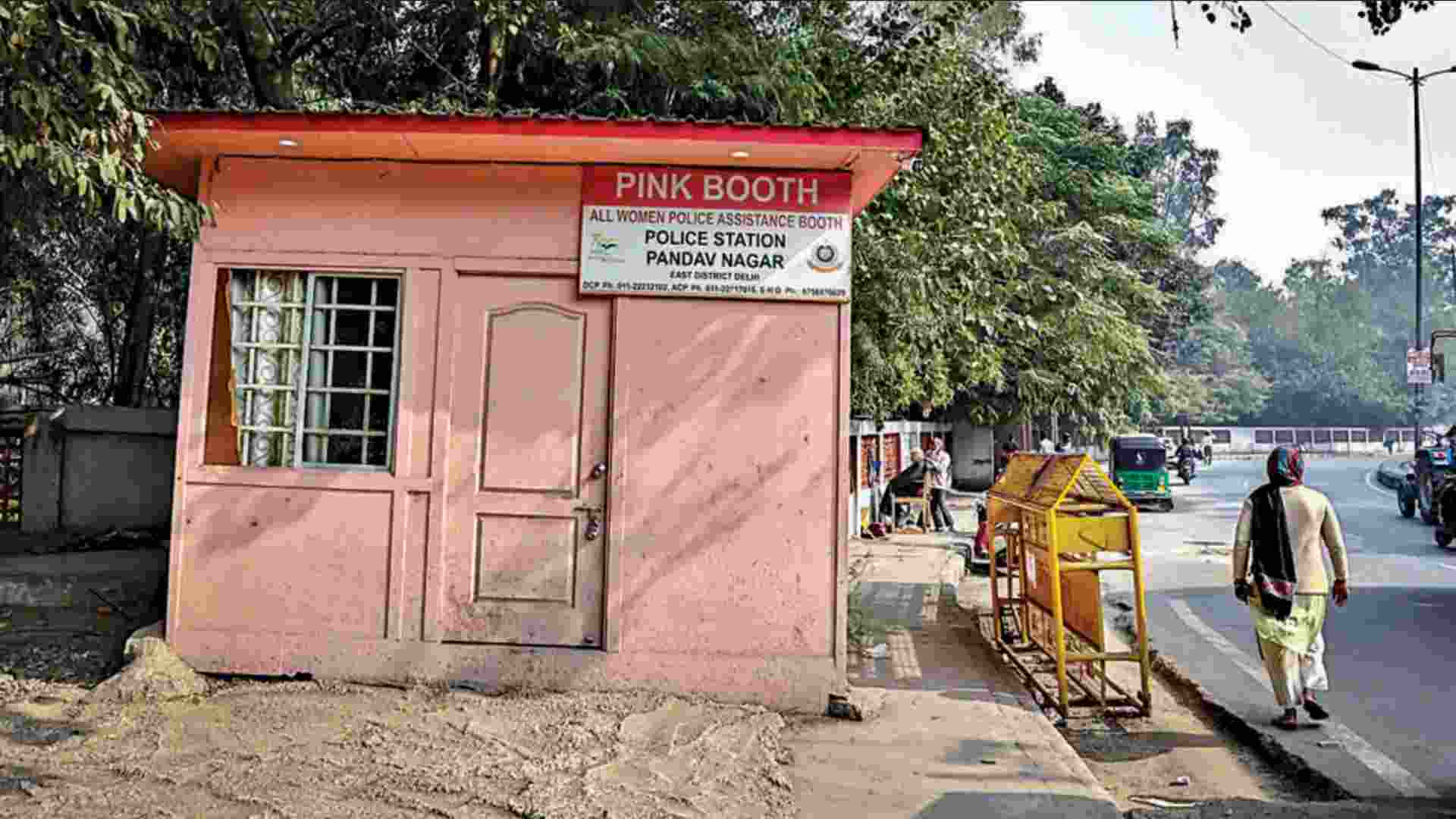The iconic pink booth at Janpath Market has undergone a significant change, with its distinctive magenta hue replaced by blue. Previously staffed exclusively by female police officers dedicated to assisting women passersby, the outpost now accommodates three male head constables behind teal curtains.
According to one officer, the booth no longer operates as it once did, serving instead as a place for off-duty officers. However, they assured that assistance would still be provided if someone sought help.
Introduced in 2021, the pink booths were established as safe havens for women, staffed solely by female personnel in areas with high foot traffic of women like colleges and markets. Despite the rollout of 135 booths, a recent inspection by The Indian Express revealed several booths across Delhi, including the one at Janpath, to be either non-functional or poorly maintained.
For instance, near DU’s Mata Sundri College, the pink booth was found locked during operational hours, and a sub-inspector at IP Estate police station was unaware of its existence. At Deshbandhu College, there were no female personnel visible at the booth, which displayed names of male officers.
The situation was more disheartening outside Lady Shri Ram College for Women, where the booth appeared abandoned and occupied by stray dogs. At Anand Vihar ISBT, confusion persisted among police personnel regarding the existence and location of the area’s pink booth.
Responding to inquiries, Delhi Police spokesperson Ranjay Abrisiya acknowledged varying operational hours and staff shortages but affirmed the ongoing status of the pink booth initiative.
The concept behind these booths aligns with Delhi Police’s strategy to provide safer spaces exclusively for women, addressing their safety concerns in a city where crimes against women remain alarmingly high compared to other cities in India.
With the recent introduction of three new laws aimed at enhancing women’s safety—Bharatiya Nyaya Sanhita (BNS), Bharatiya Nagarik Suraksha Sanhita (BNSS), and Bharatiya Sakshya Adhiniyam (BSA)—the role of pink booths in facilitating the enforcement of these laws is crucial. These include provisions for dealing with crimes like snatching and consensual intercourse under deceitful means.
However, the effectiveness of pink booths has been hindered by staffing shortages, with women constituting only a small percentage of the police force in Delhi. Despite challenges, police officials remain committed to improving women’s safety across the city.






















